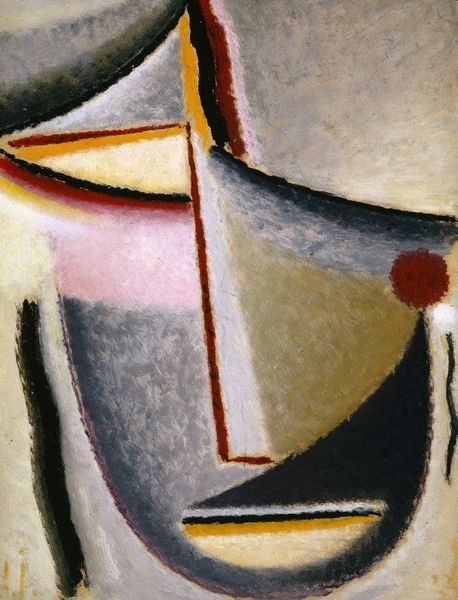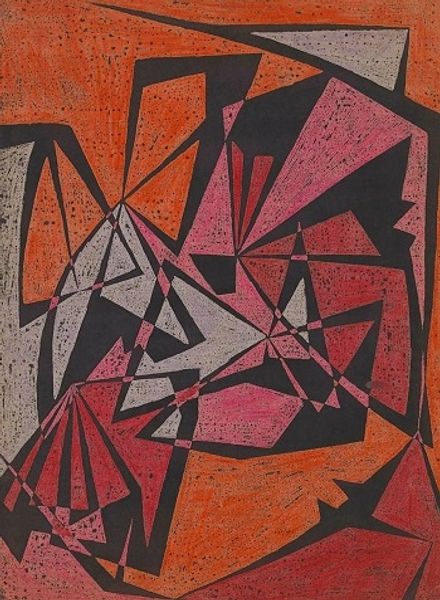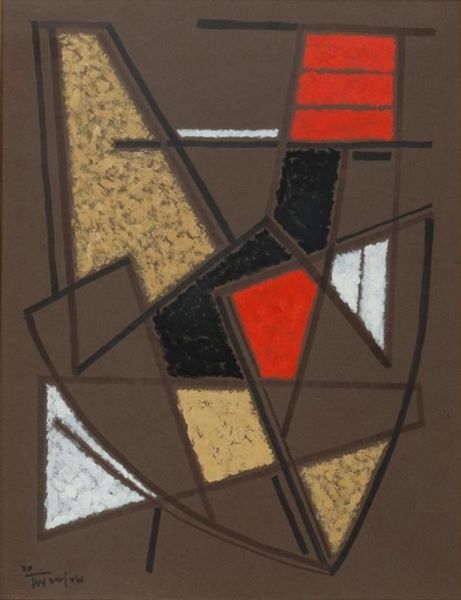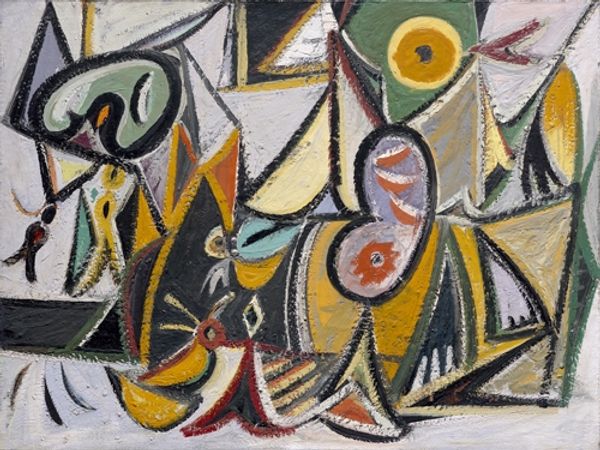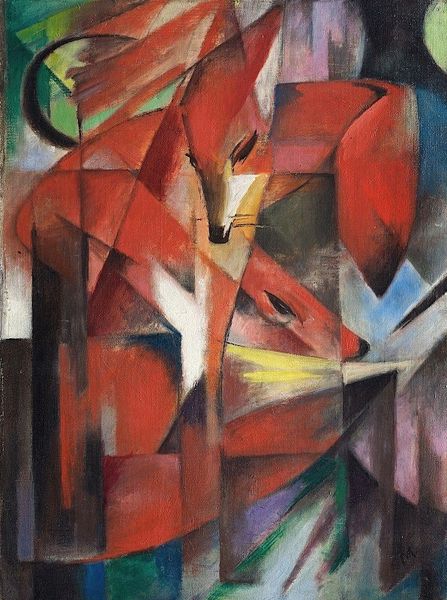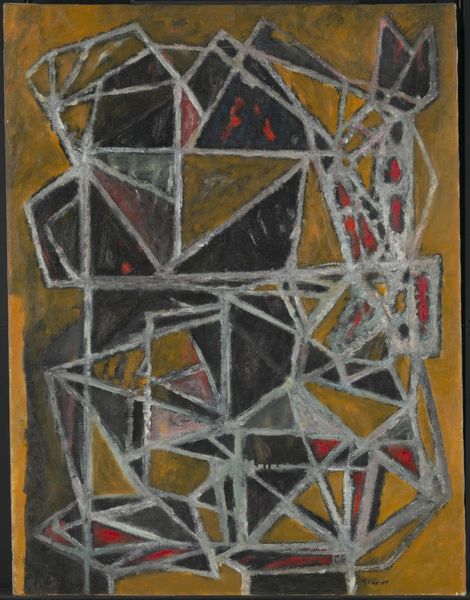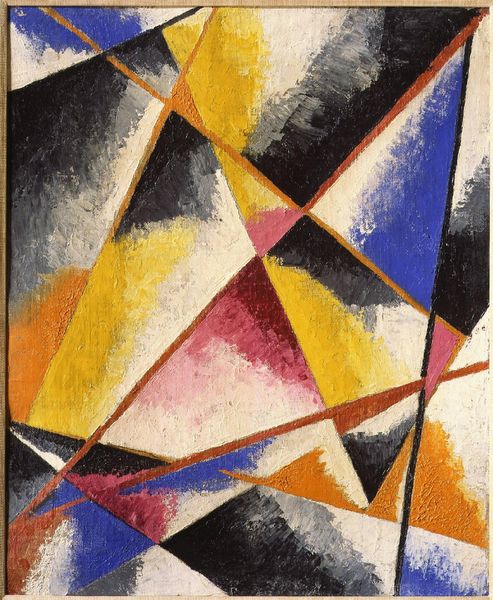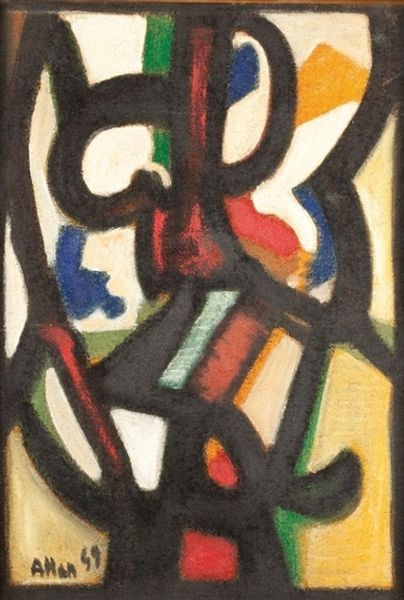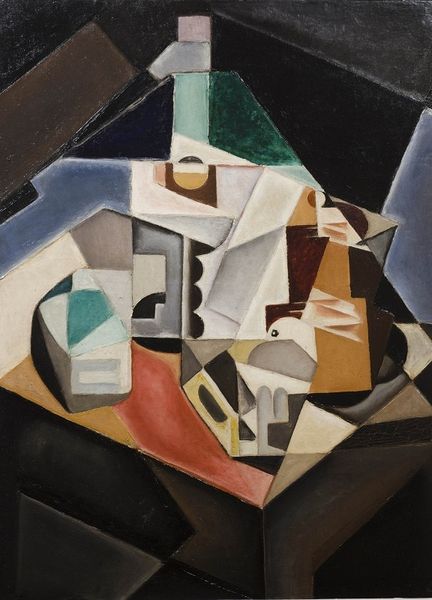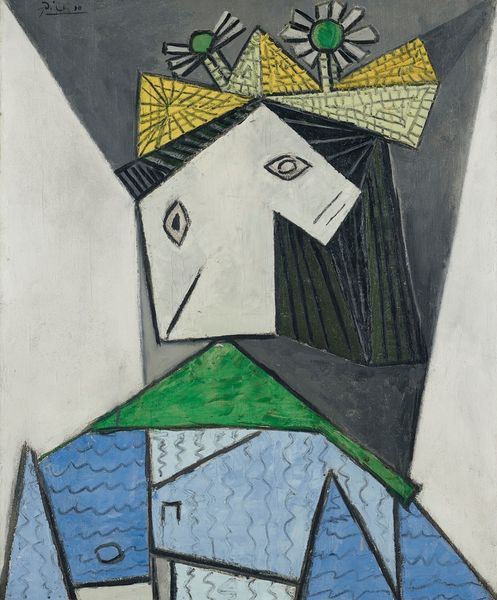
Dimensions: support: 1003 x 819 mm frame: 1046 x 862 x 51 mm
Copyright: © The estate of William Gear | CC-BY-NC-ND 4.0 DEED, Photo: Tate
Curator: William Gear's "Interior," part of the Tate collection, is a striking abstract piece. Editor: I’m immediately struck by how the fragmented shapes seem to both reveal and conceal, creating a sense of unease. Curator: Gear was deeply influenced by the post-war avant-garde, particularly the move towards abstraction as a means of expressing complex emotions and ideas beyond traditional representation. Editor: It's interesting to consider this in relation to post-war anxieties – the dismantling of the familiar, the fracturing of identity. The geometric forms feel almost violent. Curator: Yes, and it's worth noting Gear's involvement with the COBRA group, known for their experimental and often politically charged art. This background no doubt informed his approach. Editor: Absolutely. You can sense a rebellion against conventional aesthetics. It makes me wonder about the interiority being represented. Is it a space of confinement, or a site of potential reconstruction? Curator: It invites the viewer to actively participate in making meaning, reflecting the socio-political climate of its time. Editor: A potent reminder that even abstraction can be a form of social commentary.
Comments
Join the conversation
Join millions of artists and users on Artera today and experience the ultimate creative platform.
tate 8 months ago
⋮
After active service in the Second World War, the Scottish artist William Gear moved to Paris in 1947. There he came into contact with Constant who invited him to contribute to the 1949 CoBrA exhibition in Amsterdam. Interior is a transitional work from that period. The strong colour and simplified forms recall Gear’s earlier, freely-handled works. At the same time, the exaggerated outlines anticipate his development of a more controlled abstraction. Gallery label, August 2004

